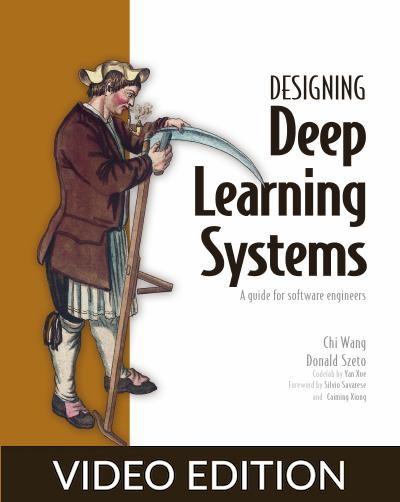
English | MP4 | AVC 1280×720 | AAC 44KHz 2ch | 11h 57m | 1.63 GB
A vital guide to building the platforms and systems that bring deep learning models to production.
In Designing Deep Learning Systems you will learn how to:
- Transfer your software development skills to deep learning systems
- Recognize and solve common engineering challenges for deep learning systems
- Understand the deep learning development cycle
- Automate training for models in TensorFlow and PyTorch
- Optimize dataset management, training, model serving and hyperparameter tuning
- Pick the right open-source project for your platform
Deep learning systems are the components and infrastructure essential to supporting a deep learning model in a production environment. Written especially for software engineers with minimal knowledge of deep learning’s design requirements, Designing Deep Learning Systems is full of hands-on examples that will help you transfer your software development skills to creating these deep learning platforms. You’ll learn how to build automated and scalable services for core tasks like dataset management, model training/serving, and hyperparameter tuning. This book is the perfect way to step into an exciting—and lucrative—career as a deep learning engineer.
To be practically usable, a deep learning model must be built into a software platform. As a software engineer, you need a deep understanding of deep learning to create such a system. Th is book gives you that depth.
Designing Deep Learning Systems: A software engineer’s guide teaches you everything you need to design and implement a production-ready deep learning platform. First, it presents the big picture of a deep learning system from the developer’s perspective, including its major components and how they are connected. Then, it carefully guides you through the engineering methods you’ll need to build your own maintainable, efficient, and scalable deep learning platforms.
What’s inside
- The deep learning development cycle
- Automate training in TensorFlow and PyTorch
- Dataset management, model serving, and hyperparameter tuning
- A hands-on deep learning lab
Table of Contents
1 An introduction to deep learning systems
2 Deep learning system design overview
3 Building a deep learning system vs. developing a model
4 Summary
5 Dataset management service
6 Touring a sample dataset management service
7 Open source approaches
8 Summary
9 Model training service
10 Deep learning training code pattern
11 A sample model training service
12 Kubeflow training operators An open source approach
13 When to use the public cloud
14 Summary
15 Distributed training
16 Data parallelism
17 A sample service supporting data parallel–distributed training
18 Training large models that can’t load on one GPU
19 Summary
20 Hyperparameter optimization service
21 Understanding hyperparameter optimization
22 Designing an HPO service
23 Open source HPO libraries
24 Summary
25 Model serving design
26 Common model serving strategies
27 Designing a prediction service
28 Summary
29 Model serving in practice
30 TorchServe model server sample
31 Model server vs. model service
32 Touring open source model serving tools
33 Releasing models
34 Postproduction model monitoring
35 Summary
36 Metadata and artifact store
37 Metadata in a deep learning context
38 Designing a metadata and artifacts store
39 Open source solutions
40 Summary
41 Workflow orchestration
42 Designing a workflow orchestration system
43 Touring open source workflow orchestration systems
44 Summary
45 Path to production
46 Model productionization
47 Model deployment strategies
48 Summary
49 A “hello world” deep learning system
50 Lab demo
51 Survey of existing solutions
52 Google Vertex AI
53 Microsoft Azure Machine Learning
54 Kubeflow
55 Side-by-side comparison
56 Creating an HPO service with Kubeflow Katib
57 Getting started with Katib
58 Expedite HPO
59 Katib system design
60 Adding a new algorithm
61 Further reading
62 When to use it
Resolve the captcha to access the links!